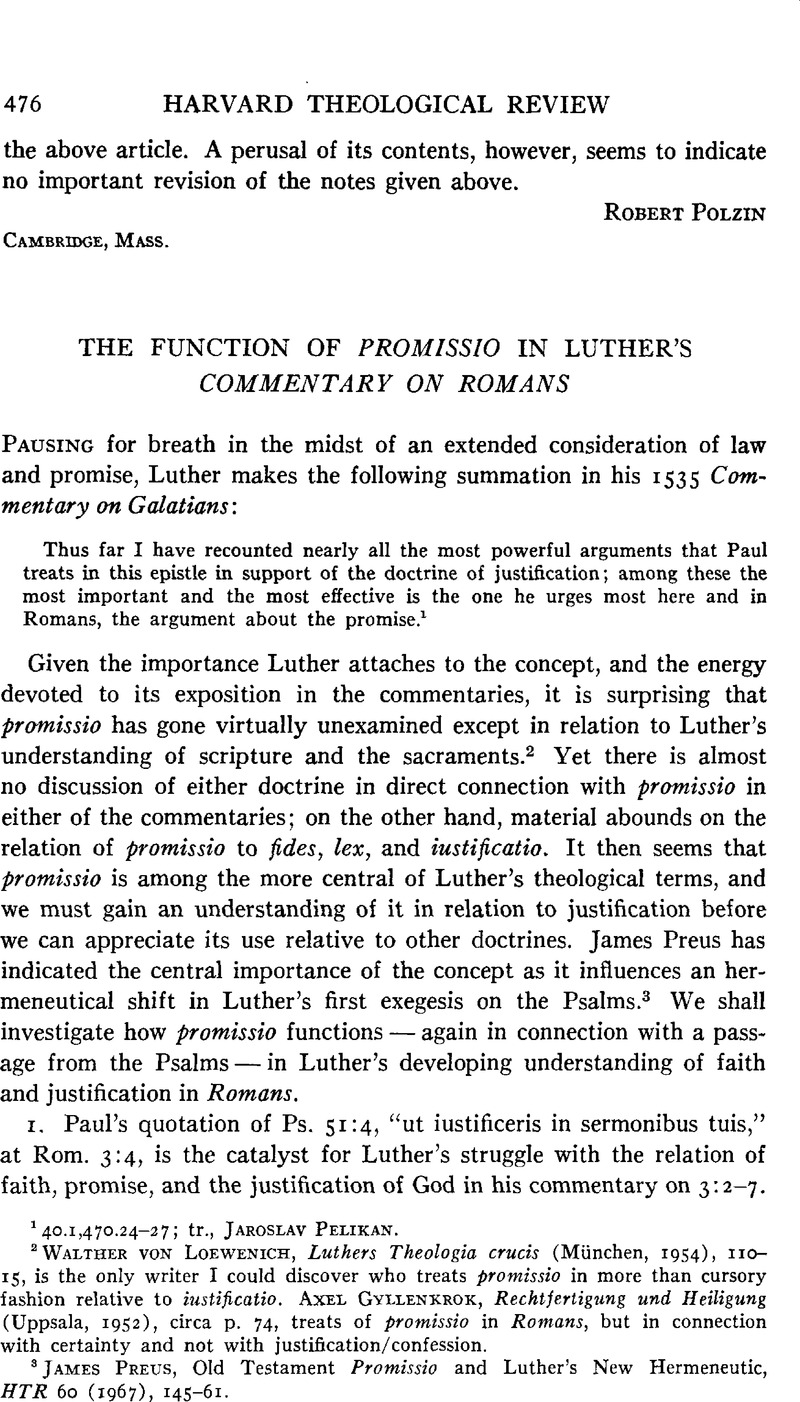No CrossRef data available.
Article contents
The Function of Promissio in Luther's Commentary on Romans
Published online by Cambridge University Press: 10 June 2011
Abstract

- Type
- Notes and Observations
- Information
- Copyright
- Copyright © President and Fellows of Harvard College 1967
References
1 40.1,470.24–27; tr., Jaroslav Pelikan.
2 von Loewenich, Walther, Luthers Theologia crucis (München, 1954), 110–15Google Scholar, is the only writer I could discover who treats promissio in more than cursory fashion relative to iustificatio. Gyllenkrok, Axel, Rechtfertigung und Heiligung (Uppsala, 1952)Google Scholar, circa p. 74, treats of promissio in Romans, but in connection with certainty and not with justification/confession.
3 James Preus, Old Testament Promissio and Luther's New Hermeneutic, HTR 60 (1967), 145–61CrossRefGoogle ScholarPubMed.
4 212.11–18; 214.18–21.
5 210.11–13.
6 30.9; gloss on 3:3.
7 215.3f.; 16–20; 216.24–33.
8 217.8–15; 218.6–13.
9 220.1–221.3; 221.4–222.19. The first is an addition to the original manuscript; the second, written on the back of a letter (leaf 50), is part of a separately-bound insertion.
10 The new material is found on leaves 51f., which make up the balance of the insertion referred to in the above note.
11 222.20.
12 210.10f.
13 223.4.
14 211.20–26; 214.2–7.
15 223.11–13; tr. Pauck, Wilhelm, Luther; Lectures on Romans (LCC, vol. 15; Philadelphia, 1961).Google Scholar
16 213.34–214.1.
17 224.13–20.
18 224.20–22.
19 224.22f.
20 224.24: “veritas obiectiva.”
21 Cf. 224.23–25.
22 225.15–17.
23 225.17.
24 226.1.
25 228.16–22 (emphasis mine).
26 A comparison of the student notes on the entire passage 3:2–7 (57.146–152) indicates that Luther's lectures are basically from the second exegesis, with only the “harmless” material (56,212.10–213.10; 214.23–27; 215.9–13), devoid of references to confession as a precondition, read in from the first exegesis!
27 229.14–17.
28 229.20–25.
29 229.31f.
30 230.2–8: “sensus proprius.”
31 231.8–10.
33 233.5–19.
33 233.21.
34 233.24.
35 202.19f.
36 226.12–21; 229.
37 268.27f.
38 269.25–29.
39 268.12; 23.
40 269.30 (earlier, “extrinsice” = “in re”).
41 270.10–13.
42 272.3–273.2.
43 272.3; 5; 8; 15; especially 17–20.
44 274.8–11.
45 But cf. 31.5–7; 32.1–3 for interesting notes.
46 45.15f.; 46.13–19; cf. 45.17f.
47 292.30.
48 406.19f.; 407.4; cf. 36.6; 407.15.
49 408.1–5.
50 408.13–17.
51 409.4f.
52 410.17f.


